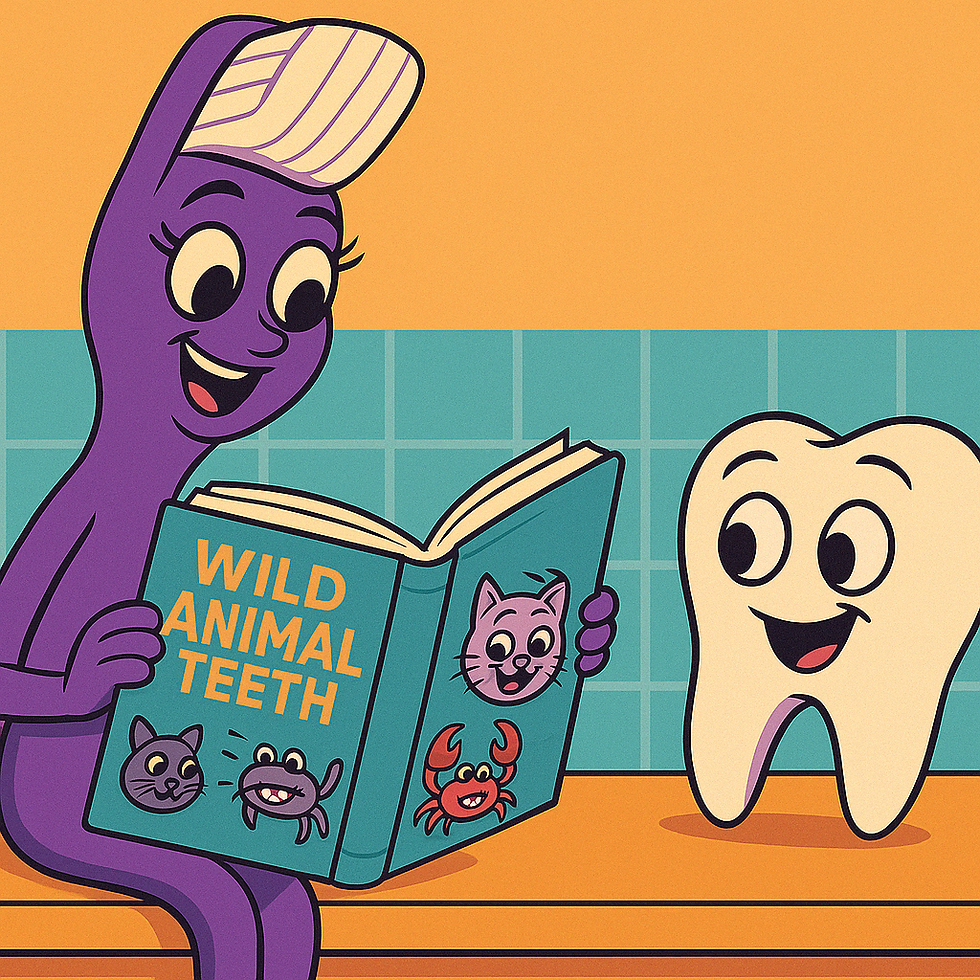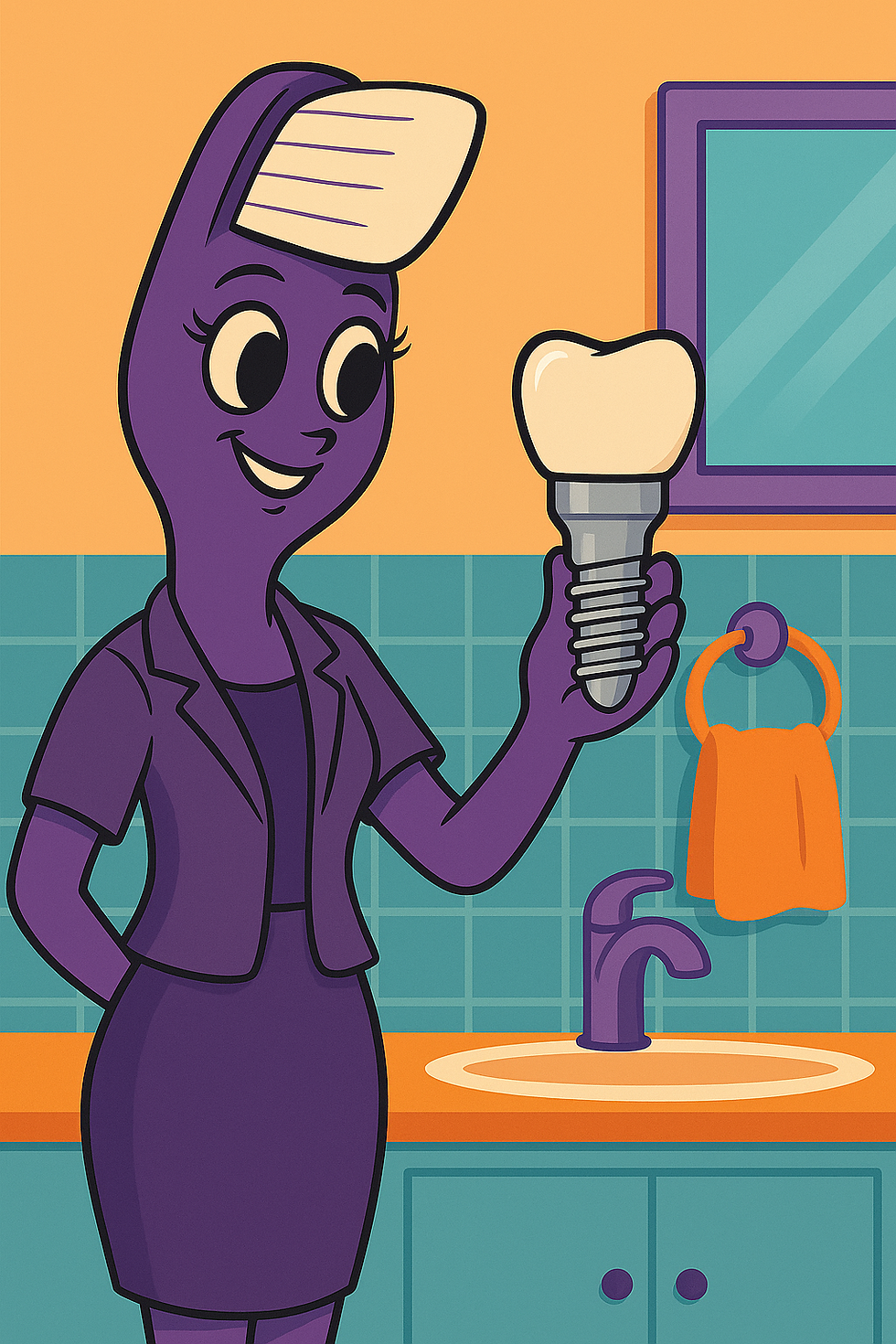Paws, Claws, and... Stomach Teeth? A Look at Animal Chompers
- naytoghlo
- Apr 20
- 2 min read
Updated: Apr 23

Hello everyone, this is Dr. Noor!
We spend a lot of time thinking about our own pearly whites – brushing, flossing, maybe even whitening. But have you ever stopped to think about the incredible variety of teeth out there in the animal kingdom? Our human chompers are pretty amazing, but nature has cooked up some truly wild dental designs!
Let's start close to home with our furry best friends.
Man's Best Friend's Bite: Your loyal dog actually has more adult teeth than you do – typically 42 compared to our 32! Their teeth are pointier and sharper, perfectly designed for their ancestral diet of grabbing, ripping, and crushing. While they *can* chew, they're often more inclined to gulp things down (as anyone who's dropped food near a Labrador knows!).
The Cool Cat's Chompers: Our feline friends, cats, have fewer teeth, usually around 30. Their teeth are highly specialized little daggers, ideal for hunting and holding prey. Ever notice those tiny front teeth? They're great for delicate grooming! Cats are obligate carnivores, and their teeth reflect that laser-focus on meat-eating.
Okay, Things Get Weird... Enter the Crab! Now, hold onto your hats, because this is where dental anatomy gets really interesting. Think about a crab. Where are its teeth? If you guessed "in its mouth," you'd be... wrong! Crabs (and lobsters too) have something called a gastric mill. Essentially, they have teeth, or hard, chitinous plates that function like teeth, inside their stomachs! They take big bites, swallow, and then let their internal "stomach teeth" grind up the food. How wild is that?! Imagine chewing your lunch after you've already swallowed it!
So, What About Us Humans? Compared to stomach teeth and specialized carnivore fangs, our own setup might seem a bit... vanilla. But don't underestimate your smile! We humans are omnivores, and our teeth reflect that versatility. We have:
Incisors at the front for cutting (like biting an apple).
Canines (our little "fangs") for tearing tougher foods.
Premolars and Molars in the back with broader surfaces for grinding grains and plant matter.
Unlike sharks that constantly replace teeth, or crabs with their hidden grinders, we only get two sets in our lifetime: our baby teeth and our adult teeth. That’s it! No magical replacements, no internal stomach grinders.
This makes caring for the teeth we have incredibly important. They have to last us a lifetime of smiling, talking, and enjoying all sorts of foods (that we chew before swallowing, thank goodness!). So, while it's fun to marvel at the fangs of a cat or the bizarre stomach-teeth of a crab, let's give our own versatile, hardworking human teeth the appreciation and care they deserve!
Keep smiling, and maybe appreciate that your teeth are comfortably in your mouth!
Warmly,
Dr. Noor N. Ay Toghlo



Comments